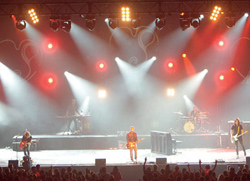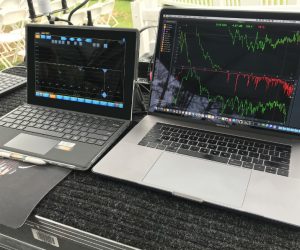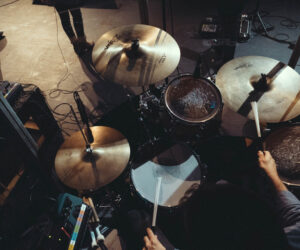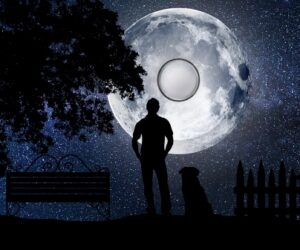We eat light, drink it in through our skins. With a little more exposure to light, you feel part of things physically. I like feeling the power of light and space physically because then you can order it materially. Seeing is a very sensuous act; there’s a sweet deliciousness to feeling yourself see something. — James Turrell, artist known for his use of light in art
Designing with automated lighting is really not much different than designing with conventional fixtures. The same design goals typically apply, the techniques are very similar if not the same, and the results, if the designer has met the goals of the design, can be similar. The difference is that the capabilities are greater, the possibilities virtually limitless, and the results can be more spectacular.
The flip side of the coin is that indiscriminate use of automated lighting can be utterly disastrous. Since automated lighting first became commercially available, the same adage about using automated lights or some variation of it has been uttered many times.
The way Anne Militello of Vortex Lighting expressed it was: “Just because it can move doesn’t mean that it has to move.”
The corollary to that might be that all movement and color change isn’t necessarily good; use them with purpose and discretion.
Design Goals
No one would begin a journey without first knowing where they want to go. The same applies to lighting design. Before beginning a new lighting design project, you should know exactly what your goals and objectives are and how you’re going to achieve them.
Before ever putting pen to paper or laying out a plot you should have a list of priorities. Some of the more common lighting design criteria are outlined in the following sections.
Visibility
Visibility is one of the most important goals of a lighting design. If you’re lighting a stage with a band or an actor, then the subject(s) should be illuminated sufficiently for the audience to see (Figure 1).
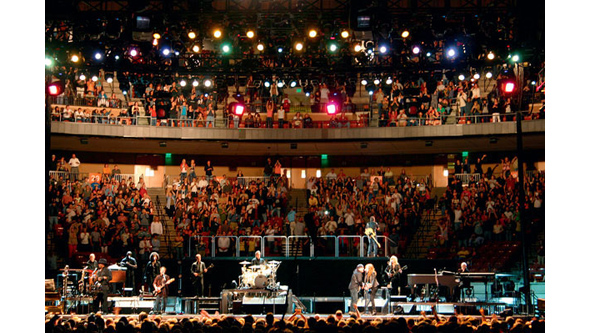
In some instances facial features and expressions are very important and in other instances the designer may choose not to reveal too much about the subject. Visibility should be quantified in terms of illuminance in lux or foot-candles (fc).
Focusing Attention
During the course of a show, it’s natural for people’s attention to drift. By keeping the stage and the subjects on it well-lit and keeping the peripheral areas at lower illuminance levels, more attention will be focused on the subjects (Figure 2).
Focusing attention is as much a function of lighting contrast, or the difference in illumination levels between the areas of interest and the areas of less importance, as it is a function of overall illuminance levels.
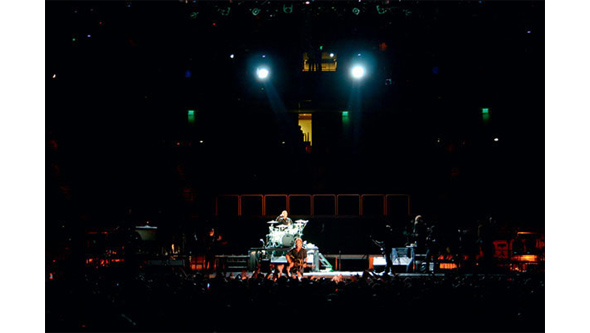
If everything in a space is lit to 300 fc, the eye has no focal point and there’s nothing to draw the eye or compel it to stay focused on the subject.
If, on the other hand, the subject is lit to 150 fc and the rest of the room is lit to 25 fc, then the eye is more likely to stay focused on the well-lit subject rather than wander around a darker room.
Many shows are reinforced with live video, either in the form of image-magnification (I-mag) or “B roll,” which is pre-produced content for playback (Figure 3). If the show you’re lighting has video, then the lighting requirements could change dramatically.
The light levels, uniformity, color temperature, and direction of lighting are all subject to critique and debate by the video crew. It’s best to communicate with the video director before beginning the lighting design to find out their requirements and expectations.
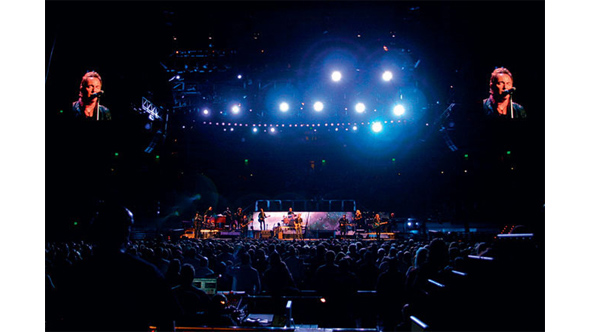
Find out about their expectations for light levels on the subject and on the set.
Modern video cameras are capable of producing good results with lower light levels but higher lighting levels still produce less grain in the picture. One of the biggest issues to deal with when video is involved is the uniformity of light across the stage, particularly if the subject moves around a lot or if there are many subjects spread across the stage.
If the light level varies from subject to subject or from one position to the next on stage, the video engineer will have to “ride the iris” or “shade the cameras” to correct the exposure levels every time the camera moves and chances are they won’t be happy about it.

